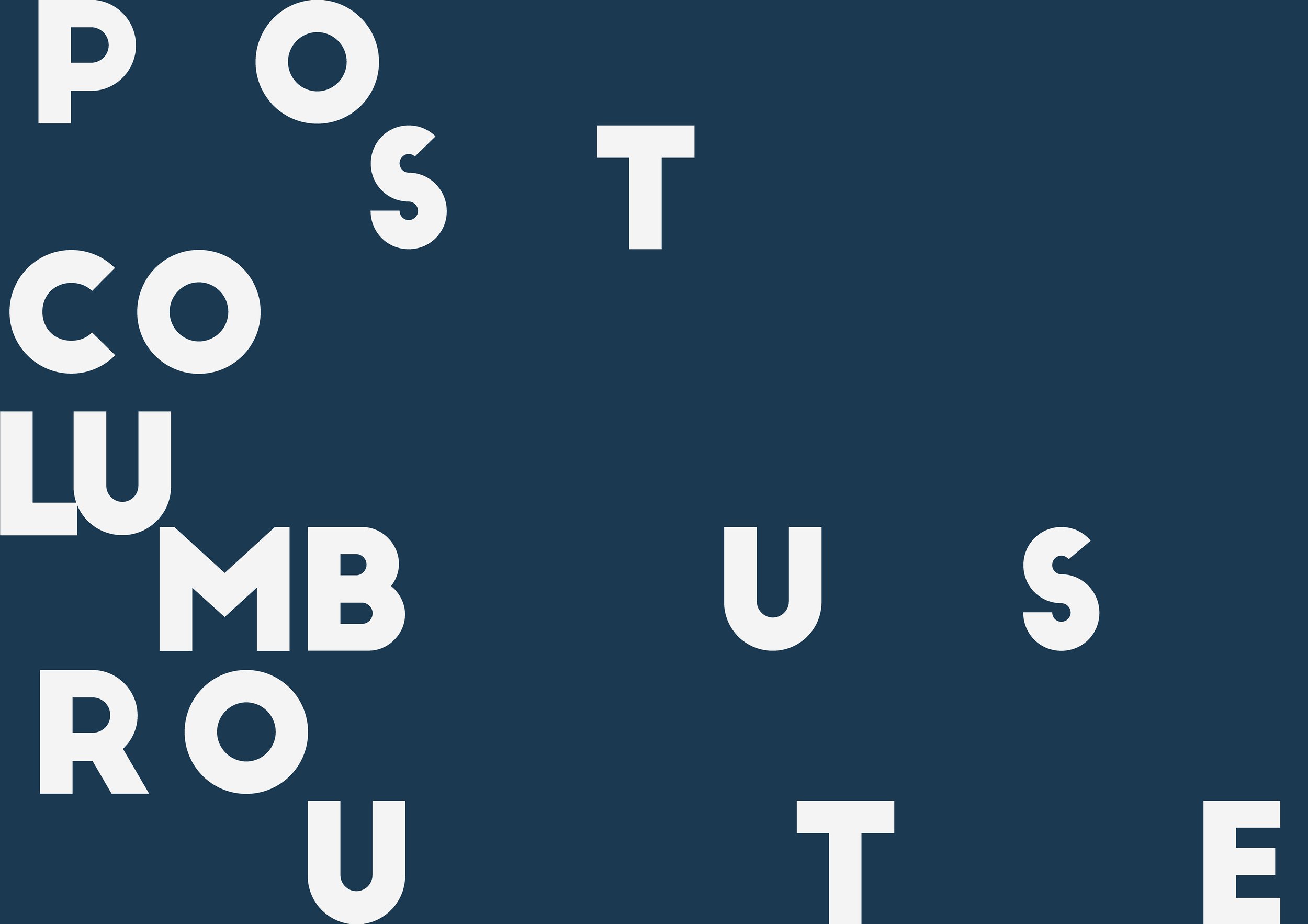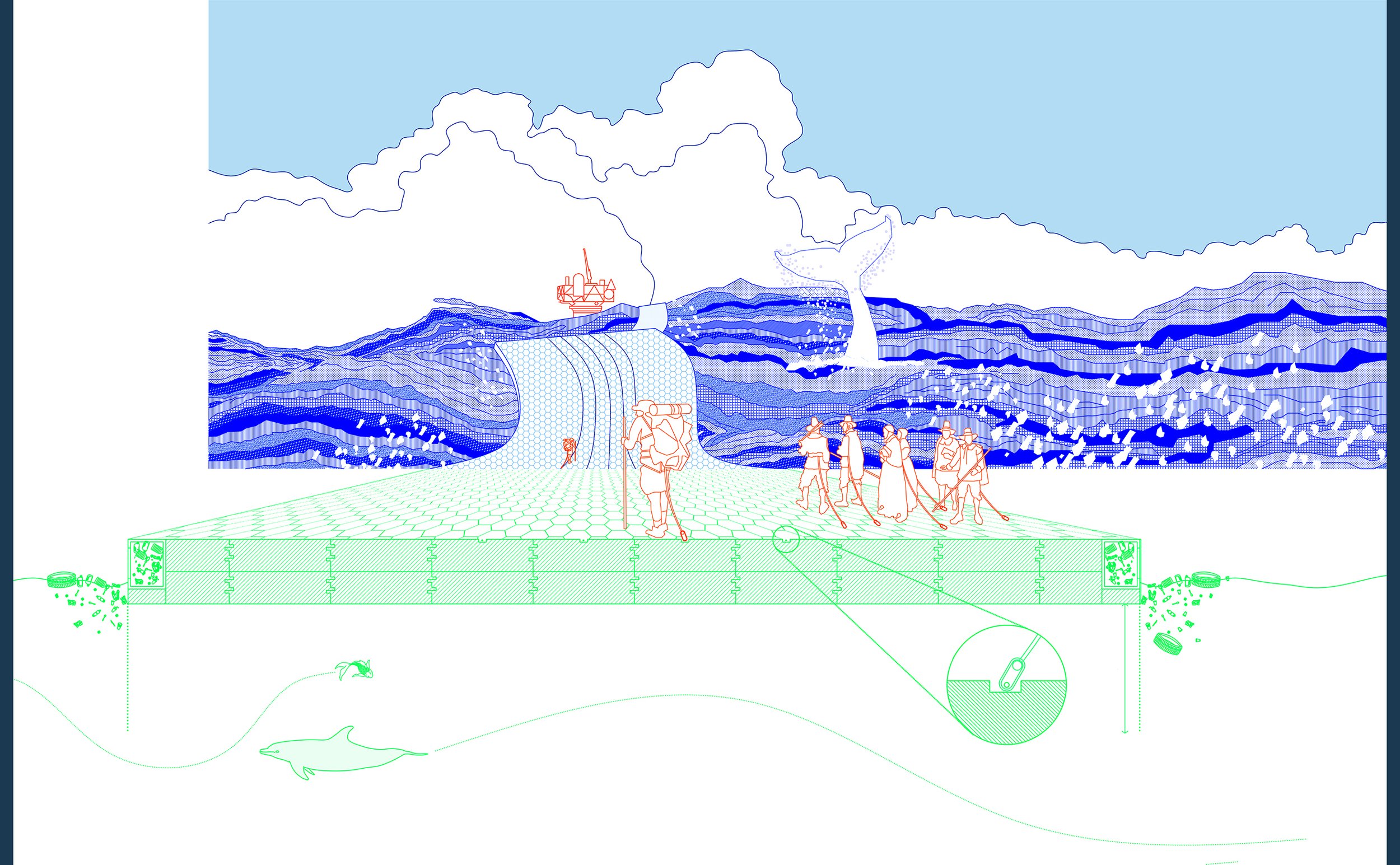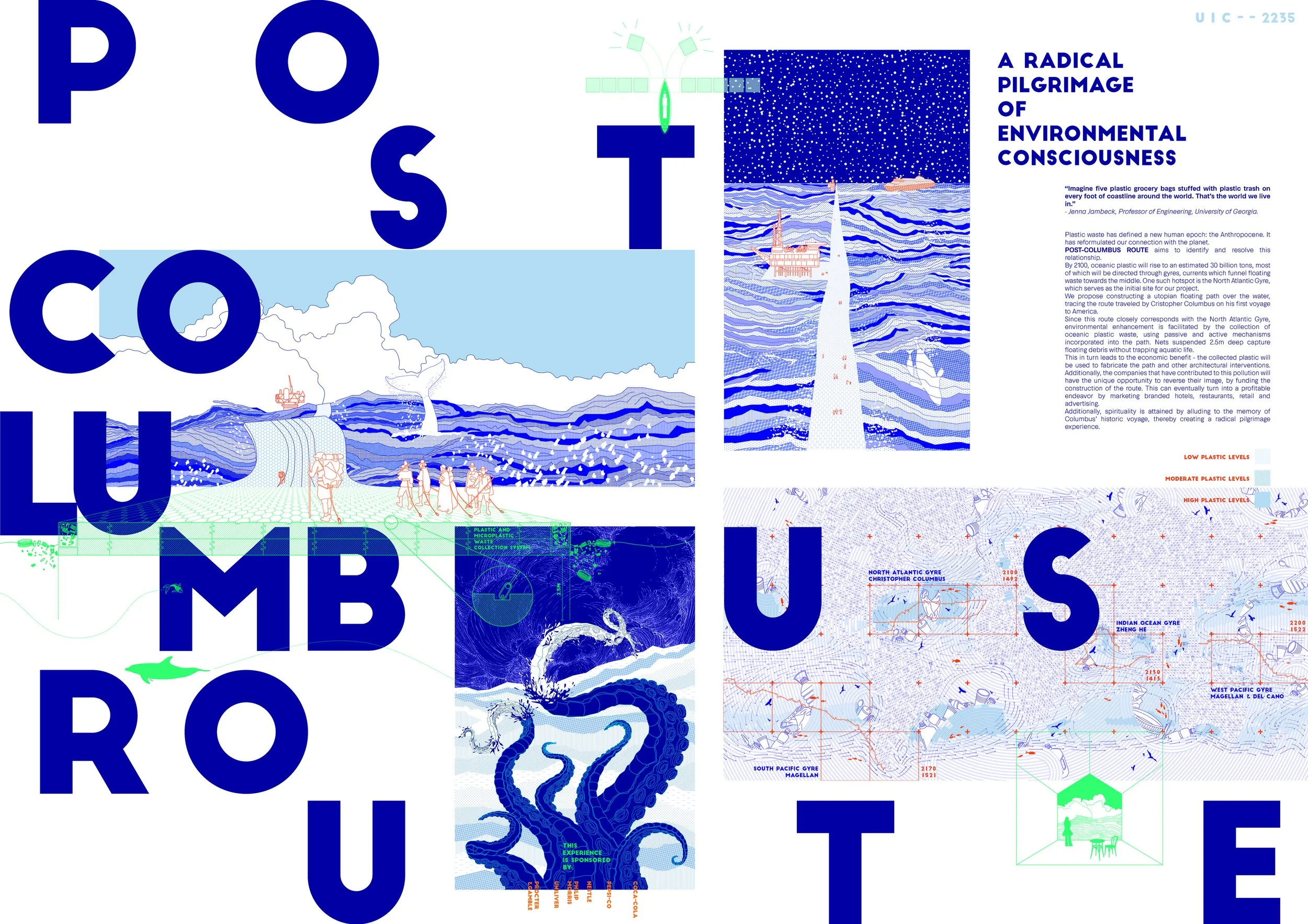
Post-Columbus Route․
A Radical Pilgrimage of Environmental Consciousness

In collaboration with AFAB Architecture
“Imagine 5 plastic grocery bags stuffed with plastic trash on every foot of coastline around the world.
That’s the world we live in.” - Jenna Jambeck, Professor of Engineering, University of Georgia.
Plastic waste has defined a new human epoch: the Anthropocene. It has reformulated our connection with the planet.
POST-COLUMBUS ROUTE aims to identify and resolve this relationship.
By 2100, oceanic plastic will rise to an estimated 30 billion tons, most of which will be directed through gyres, currents which funnel floating waste towards the middle. One such hotspot is the North Atlantic Gyre, which serves as the initial site for our project. We propose constructing an utopian floating path over the water, tracing the route traveled by Cristopher Columbus on his first voyage to America.
Since this route closely corresponds with the North Atlantic Gyre, environmental enhancement is facilitated by the collection of oceanic plastic waste, using passive and active mechanisms incorporated into the path. Nets suspended 2.5m deep capture floating debris without trapping aquatic life. This in turn leads to the economic benefit – the collected plastic will be used to fabricate the path and other architectural interventions. Additionally, the companies that have contributed to this pollution will have the unique opportunity to reverse their image, by funding the construction of the route. This can eventually turn into a profitable endeavor by marketing branded hotels, restaurants, retail and advertising. Additionally, spirituality is attained by alluding to the memory of Columbus’ historic voyage, thereby creating a radical pilgrimage experience.




3rd Prize․
Archue International Competition : The Dream of the Century
1st Prize - Non Architecture Awards for Unbuilt Projects (Landscape)
From the beginning of time human as a species dream- dream for safety, food and a roof over our heads. These dreams were transferred into reality from time to time- making us different, making us what we are now.
But the challenges at the start of mankind was safety from wild animals - these challenges no longer exist. However, we as humans are facing new challenges everyday - impending current and evolving issues like human rights violations, racial, gender and religious discrimination, displacement and immigration from war torn countries, rising global warming levels, deforestation, etc.
The Dream of the Century competition asked participants to respond to the following questions:
What is your dream for the world?
What you want to see in this world at the end of century?
What is the most critical challenge you would like to solve?
What is utopia for you?
The brief was to create a ‘dream story’ with a maximum of 4 images interspersed with a text narrative in the most spectacular way possible. Participants could pick any existing or hypothetical challenge. Participants were asked to provide the solution for the same challenge by leveraging architecture and design in their proposals.



